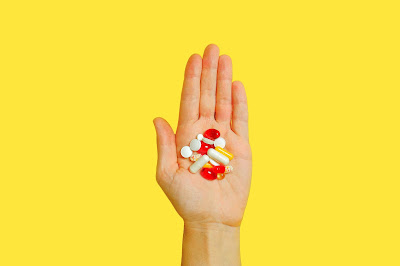Aspirin, Dipyridamole, Cilastazol, Thienopyridines, and Antiglycoprotein IIb / IIIa are described as drug components with mechanisms of action, pharmacokinetics, and pharmacodynamics. We discuss the relationship between dose, efficacy, and safety, and review the results of randomized studies. The article does not make any specific management recommendations, but rather highlights important practical aspects of antiplatelet therapy, including the optimal dosage, the variable benefit-risk ratio, when antiplatelet drugs are used alone or in combination with other antiplatelet agents in various settings, and the effects of a persistently high platelet reactivity despite such treatment.
Platelets are vital components of normal hemostasis and, because of their ability to adhere to the wall of the injured blood vessel, are important participants in atherothrombosis; recruit additional platelets to the injury site; release vasoactive and prothrombotic mediators that trigger vasoconstriction or promote coagulation, and form aggregates that affect primary hemostasis. Although platelet adhesion, activation, and aggregation can be viewed as a physiological repair response to the sudden fissure or rupture of an atherosclerotic plaque, the uncontrolled progression of this process through a series of loops of self-sustaining amplification can lead to intraluminal thrombus formation, vascular occlusion, and subsequent ischemia Currently available antiplatelet agents interfere with one or more steps in the platelet release and aggregation process and cause a measurable reduction in the risk of thrombosis that is not associated with an increased risk of bleeding.
When considering antiplatelet agents, it is important to note that under physiological circumstances, platelets are produced daily, an amount that can increase up to 10-fold during times of greatest need. Platelets are enucleated blood cells that are formed by the fragmentation of the bone marrow cytoplasm of megakaryocytes and have a maximum circulating life of 10 days. The regulation of platelet production is mediated by thrombopoietin, which is mainly produced in the liver, as well as in the bone marrow and kidney, and is eliminated by binding to high-affinity receptors on platelets and megakaryocytes. When the platelet mass is high, the levels of thrombopoietin are reduced and platelet production is decreased, while when the platelet mass is low, the level of thrombopoietin increases, which stimulates thrombopoiesis. Platelets are a circulating source of chemokines, cytokines, and growth factors that are performed and packaged in storage granules. Activated platelets can synthesize prostanoids, mainly thromboxane A2 (TXA2), from arachidonic acid released from membrane phospholipids through the rapid coordinated activation of phospholipases, cyclooxygenase (COX) 1, and TX synthase. The inducible form of COX (COX2) is not only found primarily in the vascular endothelium and monocytes but is also expressed in newly formed platelets, especially in the context of accelerated platelet production. it can translate constitutive mRNA into protein over several hours. Platelets can therefore play a role in inflammation, angiogenesis, and wound healing, and platelet aggregation inhibitors can affect these processes by blocking signals from platelet-derived proteins for inflammatory or proliferative responses.

